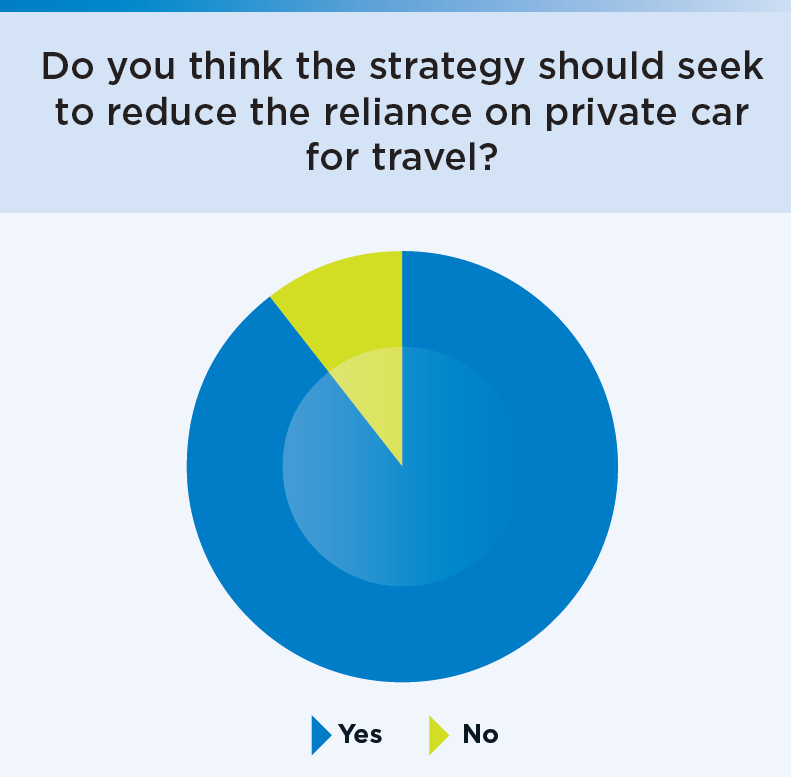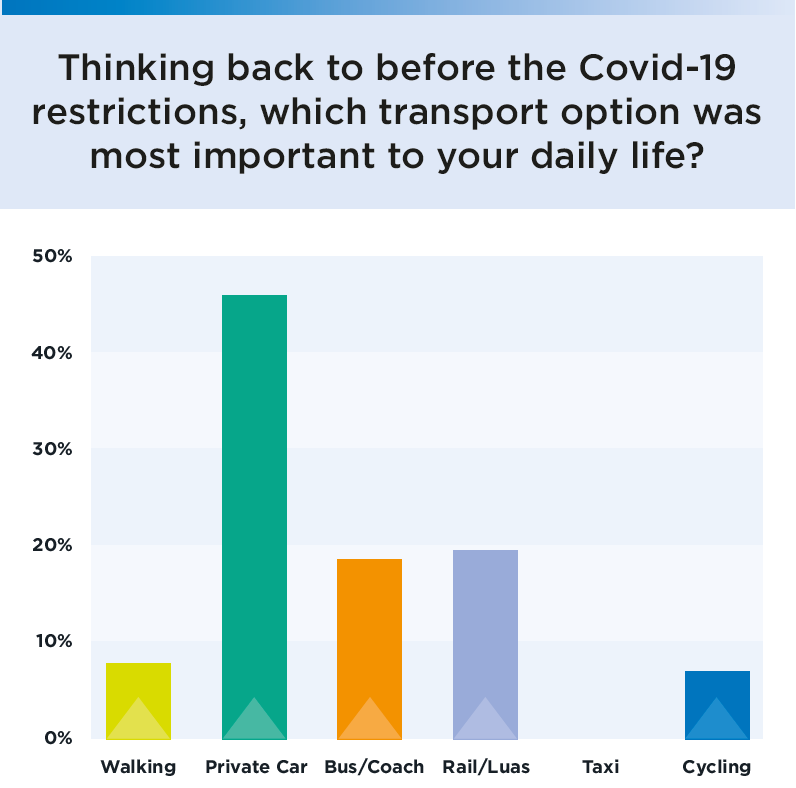6. Public Consultation
Executive summary
To ensure that the Strategy engaged with the public from the outset, the Strategy team prepared a Pre-Draft Issues Paper in November 2020. This Issues Paper highlighted some of the main considerations and opportunities for the new Transport Strategy, and sought public input into its development at the inception stage.
A full Public Consultation then took place from 23rd November 2020 to 22nd January 2021. The public were asked to assist in the development of the strategy goals and objectives, and to help identify transport requirements and opportunities. To ensure maximise exposure of the Strategy Consultation, an extensive publicity campaign was undertaken, with advertisements placed in national and local newspapers, on radio, on social media and also utilising outdoor advertising on bus shelters.
In total over 4,000 submissions were received predominantly from the general public, with 92 submissions received from various stakeholders and groups. The responses to the consultation covered many different aspects of transport needs across the region, from very local issues to considerations of a more strategic nature. Of particular note was the almost universal support for the reduction in reliance on the private car, despite almost 50% of respondents stating that it was their most important transport mode pre-pandemic.
All of the submissions were carefully considered and taken into account in the development of the Transport Strategy.
6. Public Consultation
“We should re-engineer our towns and cities for public transport, cyclists and pedestrians and invest in sustainable transport solutions that meet the needs of rural and urban communities. For example, the concept of the ’15-minute city’ is receiving greater attention as a means to reduce congestion, enhance public spaces, revitalise local economies, increase public transport efficiency and improve quality of life.
Furthermore, open public spaces in the GDA should be realigned to apply more sustainable travel measures such as additional pedestrian crossings, cycle facilities and bus routes to increase sustainable accessibility and allow our public spaces to be used in a more sustainable way.”
6.1 Consultation Process
The views and opinions of the public and stakeholders in the development of the draft Strategy was considered a central element of the process. Section 12 (8) of the Dublin Transport Authority Act sets out the requirement to engage with a number of stakeholders and members of the public at the outset during the preparation of the draft Strategy.
To this end, the NTA prepared a Pre-Draft Issues Paper in November 2020. This Issues Paper highlighted some of the main considerations and opportunities for the new Transport Strategy, and sought public and stakeholder input into its development at the inception stage.
A full Public Consultation then commenced from 23rd November 2020 to 22nd January 2021, and the public were asked to assist in the development of the strategy goals and objectives, and to help identify transport requirements and opportunities. Parallel to this a list of key stakeholders were contacted and asked for their views.
Due to the Covid-19 related restrictions it was not possible to undertake in-person events, and instead the consultation was run online with the public given an opportunity to submit commentary via a pre-prepared questionnaire and, if required, via a written submission portal. To best achieve accessibility for all members of the public, accessible versions of the Issues Paper were prepared, and direct contact was made with various Disability Groups.
To ensure maximise exposure of the Strategy Consultation, an extensive publicity campaign was undertaken, with advertisements placed in national and local newspapers, on radio, on social media and also utilising outdoor advertising on bus shelters – see Figure 6.1.
In total over 4,000 submissions were received, predominantly from the general public, with 92 submissions received from various stakeholders and groups. Almost half of respondents who gave a place of residence, were from County Meath, reflecting the scale of the campaign to deliver a rail service to Navan.
The responses to the consultation covered many different aspects of transport needs across the region, some with very local issues and others of a more strategic nature. Two of the most significant outcomes of the questionnaire are illustrated in figures 6.2 and 6.3 with almost universal support for the reduction in reliance on the private car, and with just under half stating it was the most important mode pre-pandemic.
In summary the main issues raised were as follows:
- Navan Rail Line;
- Metro to South West Dublin;
- Extension of DART;
- Improvements and expansion of the Luas network;
- Improvements to the cycling infrastructure;
- Improvements to the pedestrian environment;
- Matters related to various BusConnects schemes; and
- Electric bikes and scooters.
All of the submissions were carefully considered and taken into account in the development of the Transport Strategy.
Figure 6.1 – Outdoor Advertisement on Transport Strategy Review from November 2020
Figure 6.2 - Response - Reliance on Car

Figure 6.3 – Response – Most Important Mode
